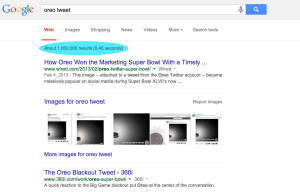Building a successful eCommerce store, requires a steady and increasing flow of customers, which makes lead generation necessary for your eCommerce business to succeed. Generating leads for your eCommerce business can be challenging and the market is quite competitive. As such, your business needs a strong strategy to stand out from the crowd.
With a competitive strategy, you can attract thousands of new visitors to your eCommerce store and move them through to your sales funnel until they make a purchase.
To help you generate more leads (and thus more business) for your eCommerce store, we’ll go over 7 tips aimed at helping you generate more leads for your eCommerce business.
Let’s start with some qualifying basics.
What is a Lead?
Within the eCommerce space or basically any industry, a lead is someone who has shown an interest in your business, products, or services. They are a potential buyer, and it’s your job to coax them toward becoming an actual buyer. There are several different actions people take that can be considered a lead:
- For example, a lead in the automotive industry might involve a potential customer browsing in a virtual showroom, or designing a custom vehicle.
- Whereas, a lead in the financial industry might involve the use of an with an online interest calculator on the website.
- For a brick and mortar store, it might be a customer interaction that leads to that customer signing up for a mailing list.
- Or, in the case of an SaaS company, a lead could someone who fills out a form to watch a product demo video.
So, as you can see, the concept of a lead varies from industry to industry. Let’s look specifically, however, at eCommerce,
What is a Lead in eCommerce?
Lead generation for eCommerce is different from traditional leads. A lead is someone (a person) that shows interest in your products or services. eCommerce leads show interest by taking specific actions on your website, funnel, forms, etc. like joining your email newsletter, following your brand on social media, or clicking your ad.
Yes, you can say that there are indeed some similarities between traditional leads and eCommerce leads, but they only extend so far.
Just think how out of the ordinary it would be if a real estate company would get a newsletter signup, offer them a 10% discount code via email, and close the deal later that day. You might be thinking, can it work that fast? Yes, that’s exactly how lead generation works in eCommerce.
To help you convert visitors into leads at lightning speed, let’s dig into 7 effective ways to get more leads to your eCommerce business.
7 Effective Ways to Get More Leads to your eCommerce Business
1. Write Valuable Content
One of the main reasons why people browse the internet is because they want to access information easily, and you can use this to your advantage. Research what people want to know about your industry, product, or company and create content around that.
How will you know what your customers want and what they’re looking for? Look at your competitor’s website, visit forums, or use tools like Answer the Public. Once you’ve identified the questions your business has to answer, you can create an FAQ page on your website, or create articles on your blog providing quality, accurate answers to those questions, and doing so you can help your customers understand your brand.
But, why should you spend time writing content? What’s the absolute value of it?
Creating high-quality, valuable content that your potential customers search for and want to read means that more people are likely to discover your website and therefore can make a purchase on your store. Being the most informed business in your industry or space your product is in will also build trust, which is the foremost ingredient for a company’s success.
2. Optimize For Mobile
There’s been a huge surge in mobile browsing over the last few years, and it’s continuing to grow. If you want to get more leads to your eCommerce store, make sure your site is mobile-friendly and optimized for mobile and tablet users. What this means is that every aspect of your website – including CTA buttons, animations, graphics, images, design, content, and all other website components are usable across different screen sizes, easy to use, and scrolling is effortless.
The simplest and most trusted way to test if your site is mobile-optimized is to try Google’s Mobile-Friendly Test tool. Or, to make it more real, simply reach out to 2-4 people in your office and ask them to do simple tasks and surfing on your website on their phones. Make sure to confirm that they go through the purchasing process and ensure the process is smooth on both mobile and desktop.
3. Offer Discounts and Deals
Leads are one of the most valuable things for your store as they invest in your business. Therefore, it’s a good idea to return that favor and give something of value back to your potential leads. A common, yet effective way is to offer discounts to your repeat customers – at least to those who are willing to share their email address for further features and updates. In exchange for that, you can offer a free add-on, free shipping, or a flat discount on their next purchase.
Pop-ups might irritate you, but free stuff wouldn’t. Hooking up a visitor with a freebie item is a great way to generate leads for your eCommerce business. If you’re running your store on Shopify, there are several apps you can use to offer these type of lead generation activities, including Justuno Conversion Suite, Pop-Up Window, and Bold Upsell.
4. Personalization
Your customers don’t want the same things over and over again, and you can’t reach them all by the same marketing messages. By utilizing personalized marketing, you can customize your offers and ads and make them as relevant as possible for different customers.
For example, if a visitor has previously visited your website or a specific product page, you can display offers and discounts related to that product or category as soon as that visitor lands on your site. Using cookies can help you track activity and target your visitors more specifically. The easier you make it for people to find what they’re looking for, the more likely they’re to want to buy from you.
5. Conversion Rate Optimization (CRO)
When a visitor lands on your site, you want to convert that visitor in some way. That could be signing up for your email newsletter, participating in an online giveaway, making a purchase, or any other activity that moves them toward making a purchase or going through your sales funnel.
Conversion Rate Optimization, or CRO, is an ongoing process of testing different elements on your site to figure which are the most effective and which aren’t, which helps more in getting your visitors to convert and which don’t.
You can test everything throughout this process, whether that’s the layout of your product pages or your call-to-action buttons, videos, or forms. You can then use this information to improve your site for better conversions and more visitors.
However, on the other hand, this process can be hard and complex for some eCommerce business owners, so if you aren’t familiar with these processes, it’s better to discuss your questions or requirements with a web agency to do this for you. Because if you’re unfamiliar with this, you might end up causing technical issues on your website and destroying your web design
6. Email marketing
As we mentioned earlier, not all your visitors are going to buy from you on their first visit. That’s just a fact. But, many of those visitors will be willing to share their email address with you for future updates, giveaways, discounts, or some other offers.
Use email marketing to stay in touch with your cold leads and encourage them to visit your site and make a purchase. You can update your email subscribers about new products and discounts, notify them of sales or online contests, and share any other information like a blog they might find interesting.
You can use automated email campaigns to send specific messages to your email subscribers based on the actions they take on the site. For example, If a customer adds some products to his cart but leaves without the checkout, you can send him an email with a link to return to the checkout page and complete his transaction.
7. Search Engine Optimization (SEO)
Think about how your potential customers shop online? How they find the products they want online? In most cases, they begin by searching for products online on major search engines like Google.
With the right SEO strategy, you can improve your site and let your pages rank in the Google results of those product searches. This makes it easier for your potential customers to find you online and allows you to focus more on your marketing budget for the people who actively search for your products and could be your long-term customers – or hot leads.
Conclusion
Alright, so now we know why having more leads for your eCommerce business is important. Along with that, we also go through seven interesting and simple ways to get more leads to your eCommerce business.
There are many ways to invest your money as a business, but when it comes to the eCommerce space, the best thing to do is invest your money in content and promotion. Spend the money on things like SEO and content marketing, and your audience will grow, as well as your business.
there’s one more thing you should also keep in mind. eCommerce lead generation isn’t always simple and easy. There’s a lot of competition online, so you don’t have to compare your leads with other businesses. But, you do have to focus on your business, improve your products, and keep working on these 7 strategies to get more leads to your eCommerce business.
Digital & Social Articles on Business 2 Community
(28)





